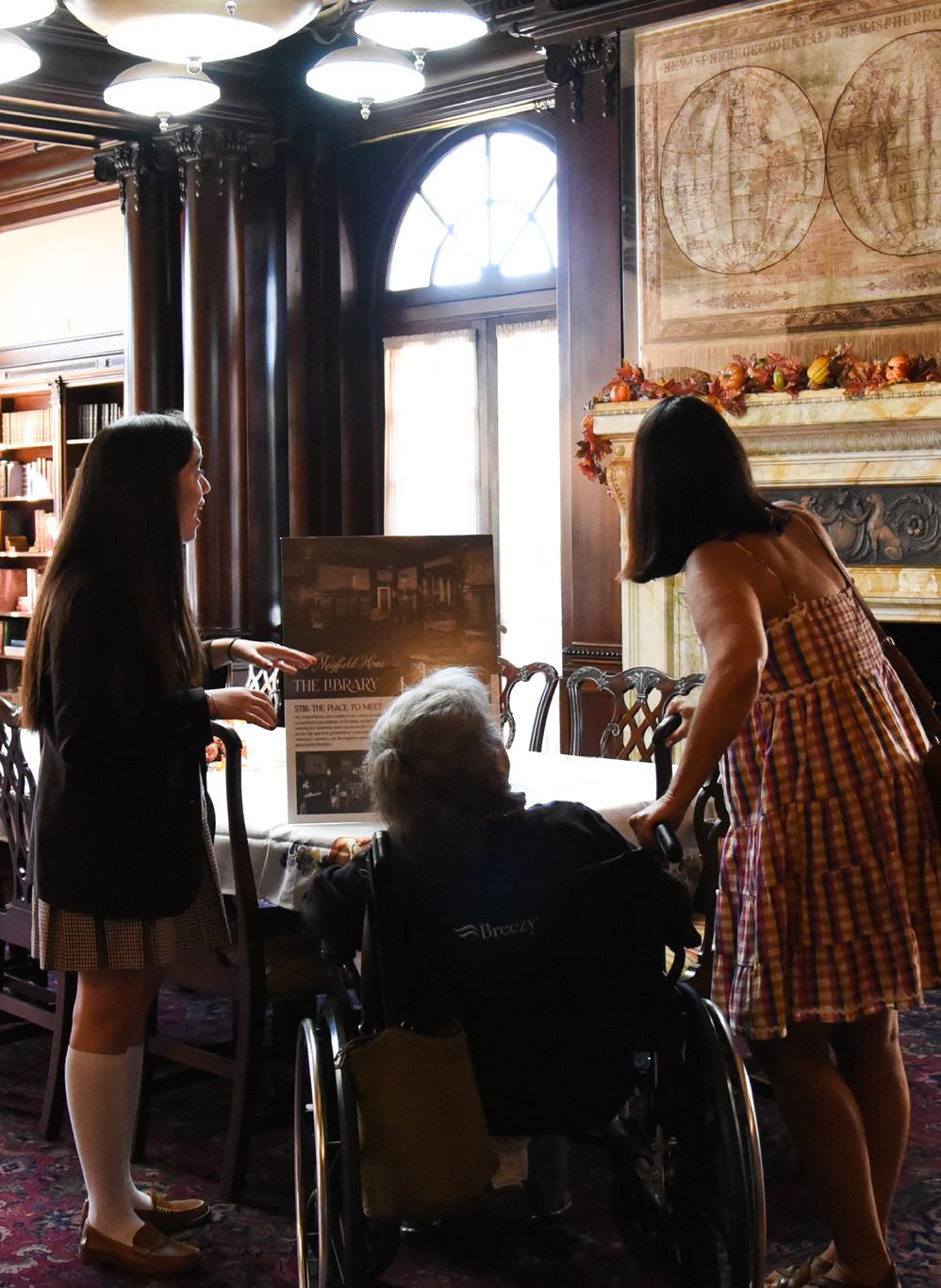
2 minute read
Strub Hall Centennial: Uncovering Strub Hall’s “Herstory”
Student historians want to know more about the women who made their home at 500 Bellefontaine.
When it was completed in 1919, E.J. Marshall’s lavish 30- room mansion was heralded by local newspapers as one of the most magnificent houses in the West. Almost exactly 100 years later, 11 teenage girls—who had all spent the morning in Mr. Marshall’s former residence—file in and find their seats for the first meeting of the Mayfield History Club for 2019. President Drew Valentino ’22 calls the meeting to order and introduces their advisor, Angela Howell ’76, Associate Head of School for Strategic Initiatives.
Advertisement
The students spend a few minutes reflecting on their first impressions of Strub Hall: “Majestic.” “Surprising.” “Historical.” “I was in awe.” Drew says it was surreal to be surrounded by students on their way to classes, while she felt a barely contained sense of “amazement that this is an actual school.” She explains with a laugh that it was so beautiful that she almost imagined that “angels might sing.”
Despite their impressions of grandeur, it is impossible not to notice how often the word “home” appears in the exact same conversation. A jumble of voices concur, saying, “I definitely felt almost at home in the living room, straight away,” and “I like how homey the classrooms are, and there’s fireplaces... I don’t really feel like I’m at school.” This remains one of Mayfield’s most endearing charms and why so many students and graduates consider Strub Hall their second home.
In the early 20th century, this wealthy enclave, known as Millionaires’ Row, was inhabited by men that history would remember—the Busch family (as in Anheuser-Busch), the Wrigleys (yes, the chewing gum) and silk merchant John Eagle, who bought Marshall’s home on Bellefontaine and lived there until 1942.
But Mayfield History Club members, who only know Strub Hall as a hub of female excellence, creativity and leadership for 70 years, want to explore “the women of the house,” like Sallie Marshall and Elizabeth Keyes Eagle, who lived at 500 Bellefontaine for almost 20 years, and “enlighten people” on their journeys. Although their husbands are immortalized in biographies, precious little information remains on record about these women. “Herstory” is almost always harder to find. But these young women are looking.

Club members are trained docents who enjoy sharing Strub Hall tidbits, like the fact that this silk tapestry was donated to the Sisters of the Holy Child Jesus in 1950 by former resident Elizabeth Keyes Eagle.

The Mayfield History Club meets in Gracemere House on campus, a modern structure that was built decades after E.J. Marshall’s home was completed in 1919.










